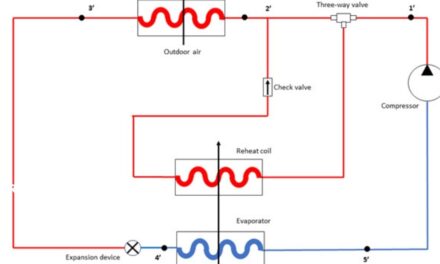THC (tetrahydrocannabinol) and HHC (hexahydrocannabinol) are two compounds derived from the cannabis plant, each with its very own set of traits, capabilities, and advantages. Understanding the differences and similarities between THC and HHC is essential for exploring their potential healing properties and effects.
Let us explore the different aspects of THC and HHC:
Chemical Structures:
The primary distinction between THC and HHC lies in their chemical systems. THC is a well-known psychoactive compound found in cannabis plants, liable for the euphoric “high” skill and will be of aid to users. Its molecular shape is a cyclic ring with a chain, interacting with the CB1 receptors and helping the user in a time of need.
On the opposite hand, HHC is structurally just like THC, however, with a further hydrogen atom in its shape. This seemingly small distinction can lead to variations in how the body methods and responds to those compounds.
Psychoactive Effects:
One of the most considerable differences between THC and HHC is their psychoactive potency. THC is famous for its sturdy psychoactive responses, making it the number one contributor to the recreational use of cannabis. Also, the Cyprus activity is very helpful for some medical purposes as well. Its interaction with CB1 receptors in the brain results in altered belief, temper, and cognition.
HHC, even as it shares a structural resemblance to THC, is known to have much less psychoactive results. This indicates that HHC may additionally provide a greater subdued or specific psychoactive experience compared to THC. The distinction in psychoactivity is of great use and interest for people who are more interested in the medicinal and healing benefits of THC minus the acute excessive high associated with the use of THC. There are many areas where the medicinal benefit of THC is needed, but because of the psychedelic effects it has on the mind, people often drop the thought of using it for healing. With HHC, this problem would not be there. If HHC vs THC is considered, there can be many areas where HHC would prove to be more helpful.
Potential Therapeutic Applications:
Both THC and HHC interact with the endocannabinoid system (ECS), a complicated cellular-signaling part of the system that is responsible for regulating various physiological approaches. Understanding their capability in healing benefits calls for exploring their results in specific situations.
1. Pain Management:
THC has been drastically studied for its analgesic properties. It interacts with CB1 receptors within the ECS, modulating pain relief and supplying comfort in situations like continual pain, neuropathy, and arthritis.
HHC, with its structural similarities to THC, may have analgesic consequences. Research on its potential to alleviate aches is limited, but its interaction with the ECS indicates an opportunity for therapeutic advantages.
2. Anxiety and Mood Disorders:
THC’s impact on tension and stress is very effective, with some users reporting alleviation and others reporting complete relief from anxiety. It interacts with CB1 receptors, influencing the neurotransmitter system.
HHC’s capability in handling anxiety isn’t well-explored. However, its milder psychoactive results may make it the right choice for individuals who are sensitive to the tension-inducing aspects of THC.
3. Neuroprotective Properties:
THC has shown neuroprotective effects in preclinical research, suggesting programs in situations like Alzheimer’s sickness and multiple sclerosis.
HHC’s neuroprotective properties are less researched, but its interplay with the ECS implies a need for further investigation into its impact on neurological health.
4. Appetite Stimulation:
THC is understood for its potential to stimulate appetite, commonly known as the “munchies.” This asset has been beneficial for patients undergoing treatments like chemotherapy, wherein the urge for food or loss of appetite is a usual side effect.
HHC’s effect on the urge for food stimulation is not well-established. Future research can also explore whether or not THC and HHC share this feature and may be applied in similar healing areas. There are studies going on to explore this feature in THC-X as well. The results will allow us to know which properties can be utilized for different purposes.
5. Anti-inflammatory Effects:
THC reveals anti-inflammatory properties, making it a potential compound for conditions related to inflammation, including rheumatoid arthritis.
Limited research on HHC shows that it can also have anti-inflammatory results, imparting some other road for exploration in the development of anti-inflammatory medicinal drugs.
Laws and regulations :
As studies on HHC are in their early stages, regulatory bodies worldwide have varying stances on its legality and use. THC, being a well-studied and researched compound, is challenging precise regulations and laws in lots of areas.
Conclusion:
In summary, THC and HHC, while sharing a botanical foundation, differ substantially in their psychoactive potency and ability to carry therapeutic applications. THC’s well-established psychoactive consequences have been found to be a key player in both recreational and medicinal cannabis use. HHC, with its structural similarities to THC, reportedly has milder psychoactivity and provides an exciting avenue for exploring therapeutic advantages with the fewer research results we have.
The evolving panorama of cannabis studies continues to shed light on the complex features of these compounds and their interactions with the human body. As medical understanding deepens, the capacity for targeted and customized therapeutic interventions with the usage of THC, HHC, or a combination of cannabinoids turns into an increasingly promising compound. However, it is vital to approach these compounds with caution, thinking about the characteristics and differences in reaction and the need for rigorous research to set up safety and efficacy profiles for various reasons and conditions.





